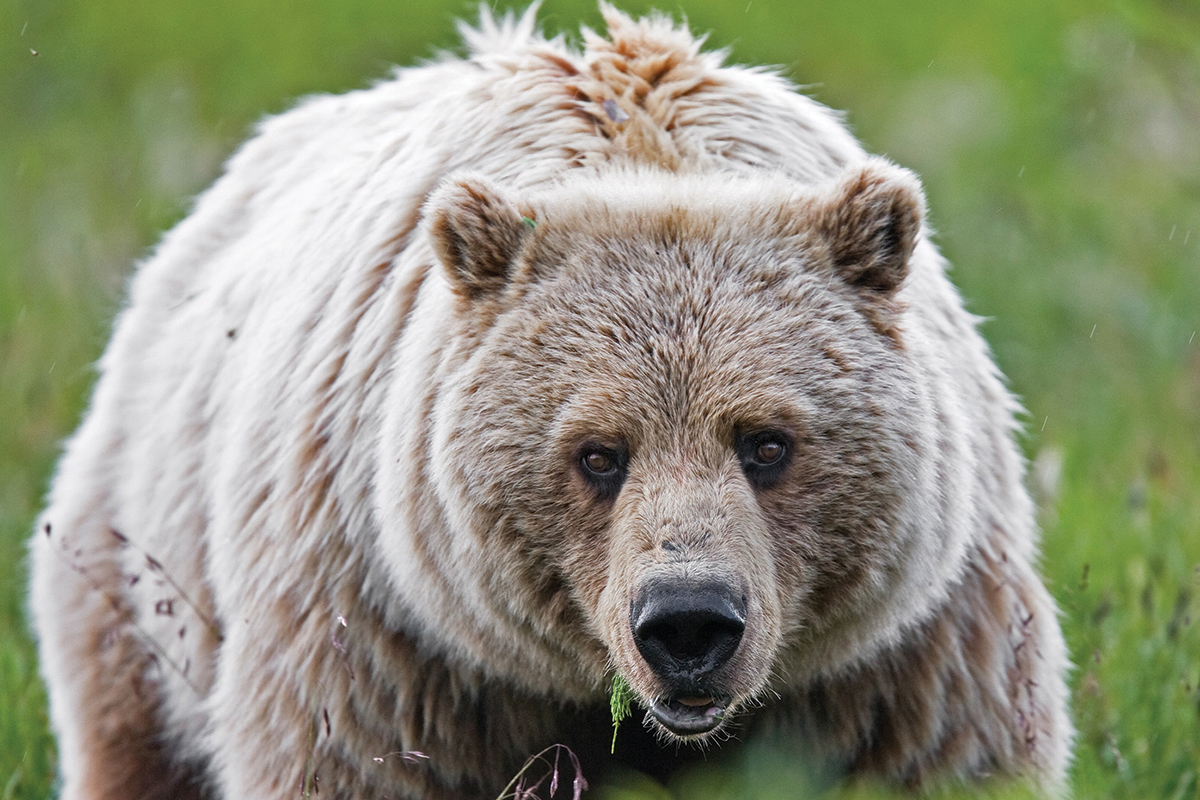Last year marked two of the greatest wildlife conservation success stories in recent U.S. history. In a span of three months, two of our nation’s most charismatic species received clean bills of health from the federal government.
Yellowstone’s iconic grizzly bears numbered just 136 in the early 1970s. Today, the grizzly has rebounded to more than 700 bears. That warranted a decision by biologists and wildlife managers to remove Ursus arctos horribilis from the endangered species list, a move formally proposed by the Obama administration one year earlier.
All the way across the country, another beloved mammal, the West Indian manatee, received similar good news. With Florida’s annual survey of manatees showing the state was home to more than 6,000 of the sea cows, up from 1,200 in 1991, the U.S. Fish and Wildlife Service changed the status of the manatee from endangered to threatened.
As a conservationist, moments like these are a cause for celebration and an opportunity to honor the years of hard work by state, federal, nonprofit, and private partners. Yet the popular reaction to these two announcements was something far less.
“Yellowstone Grizzly Bear to Lose Endangered Species Protection,” read a less than cheerful headline from The New York Times. Groups as varied as the National Parks Conservation Association, the Humane Society, and Sierra Club lined up to file suit to keep the bear listed. The Miami Herald labeled the reclassification of the manatee a “bad idea.” One prominent Republican congressman in Florida called it “hugely disappointing” and joined 10 other members of the state’s congressional delegation in sending a letter to the Department of the Interior opposing the change.
The Endangered Species Act defines an endangered species as one “in danger of extinction”—think of a hospital patient in intensive care or a trauma center. A threatened species is one likely to become endangered or in jeopardy of extinction. In the case of Yellowstone’s grizzlies and Florida’s manatees, federal biologists reasonably concluded based on sound science that neither was in danger of extinction. That should be good news.
It is understandable that many are so concerned about our most charismatic wildlife species, especially if protections disappear. But in cases where a species is either downlisted or delisted, significant conservation guardrails remain.
In the case of the manatee, as Jonathan Wood notes in this issue, changing the designation from endangered to threatened does nothing to change the management of the species. That’s because the Endangered Species Act currently treats endangered and threatened species identically when it comes to its “take” provisions. There is an important conversation to be had about whether that policy should change so as to provide greater incentives for recovering species. After all, what’s the point of improving the status of a species if all the same protections are in place, and it is still met with a public outcry of derision?
In the case of the grizzly, the delisting decision puts management in the hands of various states—Idaho, Montana, and Wyoming. State wildlife officials there have been working for decades to protect grizzly bears as their numbers and range expanded. States are also the primary wildlife managers in America, and they are often innovators of wildlife recovery, as former Colorado state wildlife chief Greg Walcher demonstrates in these pages. The states know that if the grizzly population drops below a certain threshold—in this case 500—the bear would be placed back on the endangered list. That is why the three states have called for an ecosystem-wide population of at least 674 bears.
If the Endangered Species Act is going to meet the challenges of the 21st century, it has to be something more than a one-way street into a cul-de-sac of perpetual stasis.
For the last fourteen years, before moving to Bozeman, I served on Florida’s Fish and Wildlife Conservation Commission. Working with more than one thousand of the most talented and committed state wildlife biologists anywhere, we celebrated those milestone moments when wildlife would be removed from the federal endangered species list or the state’s imperiled species list. We also recognized that thanks to the efforts of private landowners creatively working with the state, many species never warranted a federal listing or a headline, including the northern bobwhite quail and gopher tortoise.
Shortly after moving to Montana, I was again reminded of state and private collaboration when it was announced with much acclaim that the new world-record Rocky Mountain bighorn sheep was recently found not on our vast federal lands but on Wild Horse Island State Park in northwestern Montana. Thanks to state management along with the help of organizations like the Wild Sheep Foundation, the bighorn sheep herd, which was estimated at 100 animals in 1953, now number 6,000 in Montana.
Conservation needs to mean something. At the federal level, the goal should be to recover the species so that they can move out of the federal emergency room and back into the care of states, conservation organizations, and private landowners. Extended and unnecessary stays in the E.R. fill up our conservation hospital rooms and divert resources from other species in more desperate need of attention. Otherwise, in the immortal words of the Eagles, the endangered species list becomes like the Hotel California: “You can check out any time you like, but you can never leave.”
If the Endangered Species Act is going to meet the wildlife challenges of the 21st century, it has to be something more than a one-way street into a cul-de-sac of perpetual stasis. Any supporter of wildlife recovery in America should want the same.




